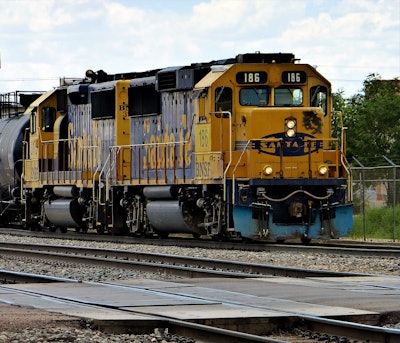
Sandro Steinbach from the Department of Agribusiness and Applied Economics at North Dakota State University along with Shawn Arita, Seth Meyer and Sharon Sydow from the Office of the Chief Economist at the U.S. Department of Agriculture wrote on the effect of a new California rail regulation on agriculture for farmdoc daily (14):121.
The new regulation by the California Air Resources Board (CARB) could significantly affect agricultural producers in the Midwest who rely on rail transport for their products. The regulation, known as the In-Use Locomotive Regulation, sets stringent new standards for locomotives operating in California, potentially leading to higher transportation costs and logistical challenges for farmers.
The regulation, effective January 1, 2024, aims to reduce emissions from diesel-powered locomotives and increase the use of zero-emission (ZE) technology. Key requirements include prohibiting the use of locomotives more than 23 years old by 2030 unless they meet the cleanest emission standards. Additionally, from 2030, new switch, industrial, and passenger locomotives must operate in a ZE configuration, with similar requirements for freight line haul locomotives by 2035.
Compliance with these regulations is expected to cost $13.8 billion from 2023 to 2050, according to CARB. These costs will likely be passed on to agricultural producers, leading to lower prices for their commodities and higher prices for consumers. The increased operational costs and potential disruptions in rail logistics could severely impact Midwest farmers who depend on efficient rail transport to move their products to West Coast ports.
California’s regulation could also set a precedent for other states to adopt similar standards, creating a patchwork of regulations that complicate interstate rail transport. Such a scenario would raise costs and uncertainty for national and global supply chains, potentially diminishing the competitiveness of U.S. agricultural exports.
Midwest agriculture is heavily reliant on rail transport, with nearly $100 billion in agricultural and food exports in 2022. Soybeans and corn, which drive much of this export growth, are particularly dependent on rail routes to West Coast ports. For example, about 59% of soybeans and 74% of other grains are exported via the Pacific Northwest (PNW), a critical hub for U.S. grain exports to Asia.
If the EPA grants California a waiver to enforce the regulation, Midwest agricultural producers may need to explore alternative transportation strategies. Shifting to road transport could increase congestion and costs, while using Gulf ports via the Mississippi River may not be cost-effective for farmers in the Upper Midwest. Significant investments in rail infrastructure to meet new standards could streamline cross-state rail operations in the long term but would strain financial resources in the short term.















